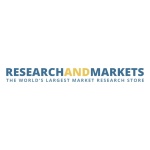
Polylactic Acid Markets, 2026 - Key Players are Corbion N.V., Toray, BASF SE, Mitsubishi Chemical, and DowDuPont - ResearchAndMarkets.com
DUBLIN--(BUSINESS WIRE)--The "Polylactic Acid Market 2020-2026" report has been added to ResearchAndMarkets.com's offering.

The global polylactic acid (PLA) market is growing at a significant CAGR of nearly 18.2% during the forecast period.
The major factors that are augmenting the growth of the market include the rising demand for biodegradable polymers and unstable crude oil prices. Biodegradable polymers are the polymers which get decomposed under anaerobic or aerobic conditions due to the action of microorganism/enzymes.
PLA is the most popular bioderived polymer that can be utilized as packaging materials and mulch film that is utilized in the agriculture sector. PLA is regarded as a versatile polymer, compostable, and recyclable with good processability, high transparency, resistance to water solubility, and high molecular weight. It is different from several thermoplastic polymers as it is derived from renewable resources such as sugarcane or corn starch.
Therefore, PLA occupies a significant position in the production volume of any bioplastic. There is a wide range of PLA applications. Some common applications include biodegradable medical devices (such as plates, screws, rods, and pins that are expected to biodegrade in 6-12 months), as well as plastic films and bottles. However, certain factors are affecting the growth of the market. The higher production cost of the PLA is acting as a restraining factor for the market growth.
Additionally, the presence of several alternatives including polypropylene (PP), polyethylene (PE), or polystyrene (PS) is the major factors that are hindering the market growth.
Segmental Outlook
The market is segmented based on application and raw material. Based on application, the market is segmented into packaging, construction material, catering and tableware, agriculture material, consumer goods, electronic material, automobile, and others. Based on the raw material segment, the market is segmented into corn-based PLA, sugar-based PLA, cassava-based PLA, other raw materials-based PLA.
Global Polylactic Acid (PLA) Market Share by Application, 2020 (%)
In 2020, the packaging segment held the largest share in the market. PLA is known as corn plastic made up of renewable resources. It is a type of polymer material and seems like traditional plastic, however, it is 100% compostable. PLA's characteristics are identical to polyethylene, polypropylene, and polystyrene.
PLA is used for food packaging, packaging of fruits and many other products. It is extensively used for packaging as it is biodegradable and is not harmful to the environment. PLA production cause fewer emissions of greenhouse gases (GHGs) compared to other plastics; it does not release any toxic while oxygenating.
PLA is a thermoplastic, and it will turn into liquid when it is heated at its melting point that is 150-160 degree Celsius. It has insulating properties that keep the temperature of the internal product as low as 4 degree Celsius at a room temperature of 25-30 degree Celsius up to 30 hrs.
Regional Outlook
The market is analyzed based on geographical regions such as North America, Europe, Asia Pacific and the Rest of the World. North America holds a significant share in the global PLA market.
Rising demand for flexible packaging also one of the major factors driving the market in the region. As per the Flexible Packaging industry, in 2018, the flexible packaging industry had $31.8 billion in sales in the US. Flexible packaging alternatives including polylactic acid has been demonstrated to emit less CO2 all over their lifecycle compared to rigid glass, aluminum, or plastic containers.
All flexible packaging products feature lightweight benefits, source reduction, and transportation efficiency. Therefore, the rising demand for flexible packaging is expected to further accelerate the market growth in the region.
However, Asia-Pacific is estimated to be the fastest-growing region for the market during the forecast period. Several factors are driving the growth of the market such as a significant rise in the packaging industry and rising environmental concerns in the region. The expansion of the e-commerce sector is one of the major factors leading to an increasing packaging industry in the region. This, in turn, is contributing to the adoption of polylactic acid for the packaging of consumer goods and food products.
Market Players Outlook
Key players operating in the market include Corbion N.V., Toray Group, BASF SE, Mitsubishi Chemical Corp., and DowDuPont Inc. These market players adopt different marketing strategies such as mergers and acquisitions, product launches, and geographical expansion to increase their market share.
For instance, in September 2020, NatureWorks declared a slate of manufacturing technology projects, which includes lactide monomer purification efficiency, that will increase the availability of the full Ingeo (PLA) biomaterials portfolio by 10%. Installation is currently underway at NatureWorks' facility in Blair, Nebraska, which is one of the largest commercial-scale PLA manufacturing plants. The projects will be completed by the end of 2021.
Key Topics Covered:
1. Report Summary
2. Market Overview and Insights
3. Competitive Landscape
3.1. Company Share Analysis
3.2. Key Strategy Analysis
3.3. Key Company Analysis
3.3.1. Corbion N.V.
3.3.2. Toray Group
3.3.3. BASF SE
3.3.4. Mitsubishi Chemical Corp.
3.3.5. DowDuPont Inc.
4. Market Determinants
4.1. Motivators
4.2. Restraints
4.3. Opportunities
5. Market Segmentation
5.1. By Application
5.1.1. Packaging
5.1.2. Construction Material
5.1.3. Catering and Tableware
5.1.4. Agriculture Material
5.1.5. Consumer Goods
5.1.6. Electronic Material
5.1.7. Automobile
5.1.8. Others
5.2. By Raw Material
5.2.1. Corn Based PLA
5.2.2. Sugar Based PLA
5.2.3. Cassava Based PLA
5.2.4. Other Raw Materials-Based PLA
6. Regional Analysis
7. Company Profiles
7.1. BBCA Biomaterial Co., Ltd.
7.2. Futerro SA
7.3. Good Natured Products Inc.
7.4. LG Chem
7.5. Merck KGaA
7.6. MiniFIBERS, Inc.
7.7. NatureWorks LLC
7.8. RadiciGroup SpA
7.9. RTP Co.
7.10. Salfeco, LLC
7.11. Sulzer Ltd.
7.12. Think3D
7.13. Thyssenkrupp AG
7.14. Toyo Engineering Corp.
7.15. Zhejiang Hisun Biomaterials Co., Ltd.
For more information about this report visit https://www.researchandmarkets.com/r/nhgdsz
Contacts
ResearchAndMarkets.com
Laura Wood, Senior Press Manager
press@researchandmarkets.com
For E.S.T Office Hours Call 1-917-300-0470
For U.S./CAN Toll Free Call 1-800-526-8630
For GMT Office Hours Call +353-1-416-8900
Editor Details
-
Company:
- Businesswire
